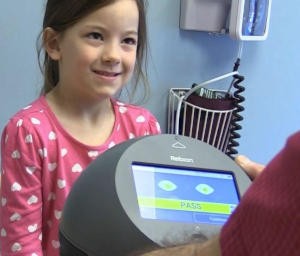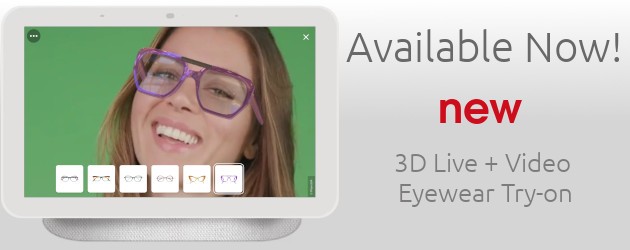Industry News
Handheld Pediatric Vision Scanner Screens Accurately for Amblyopia
 The National Eye Institute (NEI) in the U.S. has funded development of a handheld pediatric vision scanner that easily and accurately screens for amblyopia, or “lazy eye.” The device could facilitate earlier identification of children who need vision-saving treatment when therapy is likely to be more effective. It also could reduce unnecessary referrals to ophthalmologists.
The National Eye Institute (NEI) in the U.S. has funded development of a handheld pediatric vision scanner that easily and accurately screens for amblyopia, or “lazy eye.” The device could facilitate earlier identification of children who need vision-saving treatment when therapy is likely to be more effective. It also could reduce unnecessary referrals to ophthalmologists.
The device, called blinq™, detects a misalignment of the eyes known as strabismus, a condition that can interfere with the eyes’ ability to work together. The blinq™ device is unique because it detects even subtle strabismus. It was developed and tested with support of an NEI Small Business Innovation Research grant, a funding mechanism that helps independently owned companies with 500 or fewer employees bring biomedical technologies to the market. NEI is part of the National Institutes of Health.
“Vision loss from amblyopia is entirely preventable if diagnosed and treated early. Having a reliable screening strategy is one of the most important things we can do to prevent vision loss from the disorder,” said Eileen Birch, Ph.D., director of the Crystal Charity Ball Pediatric Vision Laboratory at the Retina Foundation of the Southwest.
“Initially, eye charts were all that was available for vision screening. That strategy worked well for six-to-seven-year-olds, and some five-year-olds. But it detects amblyopia too late to fully treat,” said David Hunter, M.D., Ph.D., co-inventor (with David Guyton, M.D., professor of pediatric ophthalmology at the Johns Hopkins Hospital in Baltimore) of the blinq™ device and ophthalmologist-in-chief at Boston Children’s Hospital. Hunter is also co-founder of Rebion, the Boston-based firm that markets the device.
The blinq™ device is a polarized laser scan that probes the nerve fibers inside the retina, the light-sensing tissue at the back of the eye. This allows blinq™ to detect small-angle strabismus, which is a subtle misalignment of the eyes’ foveas, the area of the retina used for sharp, central vision. Even a small misalignment of the foveas can interfere with the brain’s ability to integrate images from both eyes.
When detected with precision, misalignment of the foveas identifies essentially 100% of children who have amblyopia, with fewer false positives compared with photoscreeners.
To use, blinq™ is held 14 inches from the child’s eyes. While the child fixates on a smiley face, the device simultaneously scans both retinas in 2.5 seconds. The scans determine the precise position of nerve fibers surrounding the fovea. blinq™ detects even a one-degree misalignment between foveas—a sign that amblyopia is present. The device calculates a binocularity score which indicates whether the child requires referral to an eye health physician for further investigation.



